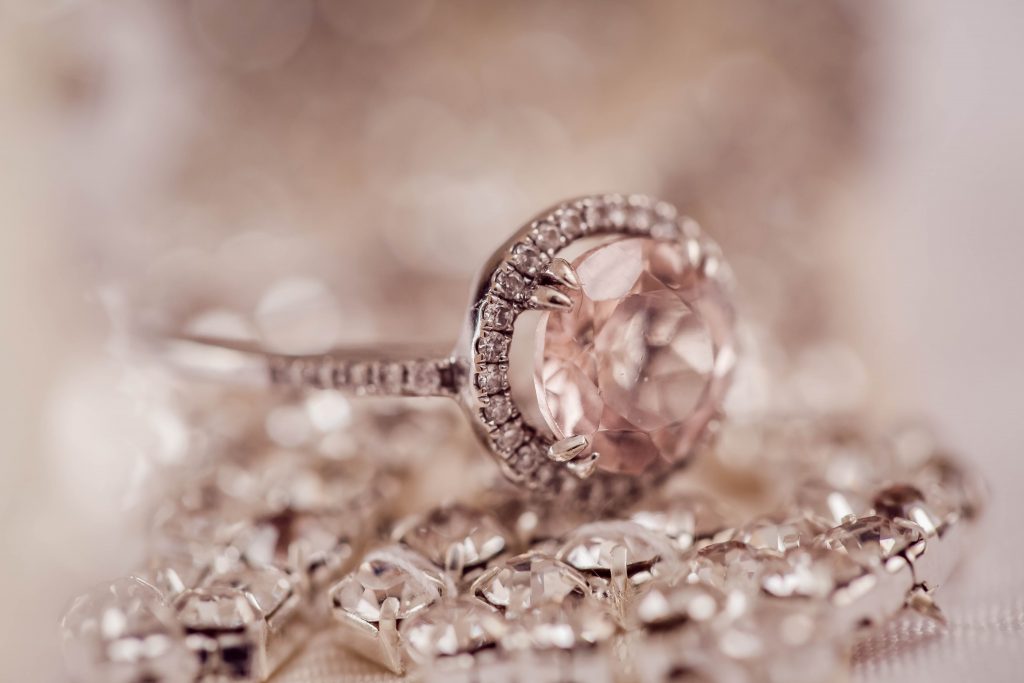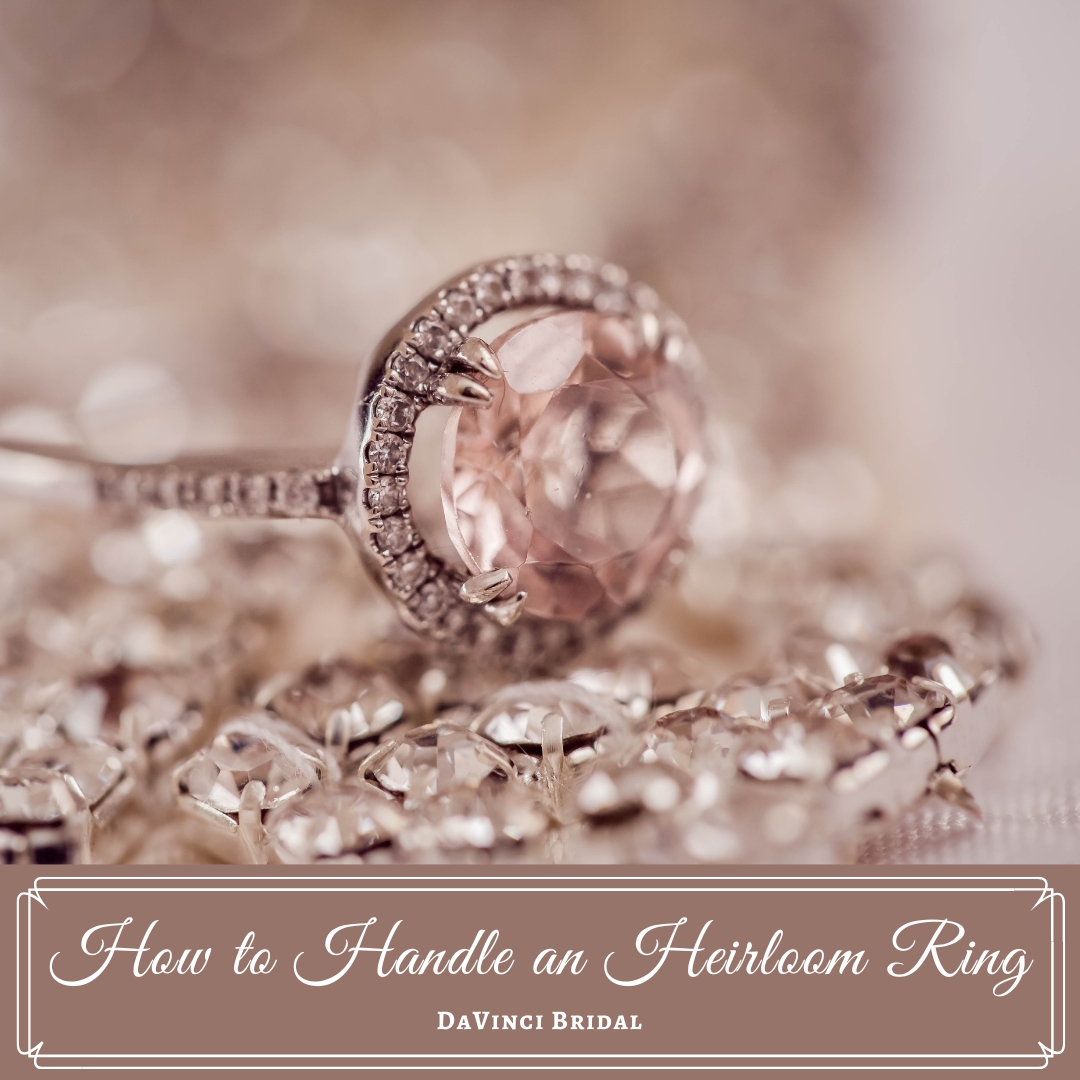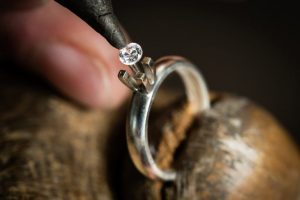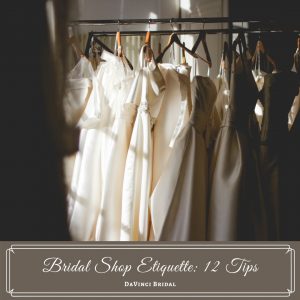How to Handle an Heirloom Engagement Ring
One of the trickiest situations for any bride can be figuring out How to Handle an Heirloom Engagement Ring.
Of course, you love your man and are thrilled that he (perhaps finally!) proposed. But what do you do if you don’t love the ring that was so precious to his family that they wanted to pass it down to you? Maybe you love the stone but hate the setting—or vice versa. Maybe it’s too fragile for your lifestyle, either because of the setting itself, or because the setting is worn down. It’s an honor to be the recipient of an heirloom, but sometimes that heirloom just doesn’t work for you. So here’s are some tips on how to handle an heirloom engagement ring.
How to Handle an Heirloom Engagement Ring
Step #1: Carefully Weigh Your Two Options
Being offered an heirloom ring is a sure sign that his family accepts you, but it can be a sticky, tricky situation. For one thing, your fiance just saved a bundle of money because he didn’t have to buy a brand new ring (along with the possible financing). But you may have had a dream for your ring right along with that childhood wedding album you’ve dragged around since you were old enough to know what a wedding was.
Also, what if you and he already went shopping, even casually, and he asked your opinion of rings in the window—but then he offers you this family ring that isn’t anywhere near anything you told him you liked?
Your choices boil down to two options:
-
Let go of your dream and graciously accept the ring
-
Find a way to alter the ring to make it your own
How to Handle an Heirloom Engagement Ring
Step #2: Have a Very Good Reason to Reset
You guy may know you don’t like the ring just from the look on your face. In that case, you’ll have to do a little tap dancing to let him know you’re thrilled to be engaged, but try not to criticize the ring at that moment. Once things have settled down—or maybe he’ll give you an out to begin with by telling you, “If you don’t love it, we can change it”—you still need to have a valid reason other than, “I just plain don’t like it.”
Here are some realistic reasons:
-
The ring/stone/setting is either way too small or way too large for your bone structure.
-
The current setting is too fragile for work. (Some vocations really are too hands-on for a fancy or delicate ring. Nurses, for instance, are required to wear a low-profile setting so they can get in and out of medical gloves and also not scratch their patients.)
-
You’ve already chosen wedding bands or, once you start shopping, you can’t find a wedding band that will work with the heirloom ring.
-
You already have an heirloom ring or stones from your side of the family that you want to wear or include.
-
You authentically love the setting, but it’s exceedingly worn and the cost to repair it truly is expensive and is perhaps more than the ring is worth.

How to Handle an Heirloom Engagement Ring
Step #3: Get Permission
Even if you and your fiance agree that the ring could use reworking one way or the other, you really need to talk to the person who offered it in the first place. This not only shows respect, but the family member who handed down the ring has already given your wedding his or her blessing. To change the ring in any way at all, other than to resize it, could easily be taken as an insult if not a flat-out rejection of the person, the ring, and even the sentiment behind it.
Find a time to sit down with the person, let him or her know how honored you are (and that should be genuine even if you really dislike the ring) and then make it clear exactly why you want to change it.
Essentially you’ll have one of five reasons—or perhaps a combination of reasons—that you’ll want to present so that the person can release you to change the ring:
-
You love the setting but not the stone, or
-
You love the stone but not the setting, or
-
You love both stone and setting, but one or the other is severely flawed, or
-
You want to add a stone from your side of the family, or
-
You simply want a unique ring for yourself. (This last reason can be tricky, but if you tread carefully, you may still be able to get permission.)
What you’re really hoping to learn is what has more sentimental value—the stone or the setting. The person might even point out flaws, like a very small diamond or a chip or crack, or a damaged setting. Maybe the person will volunteer, “I thought you might want to change it.”
The other polite thing to do is also to discuss what you have in mind as far as changes go. It can be very simple to honor the request to show off a lovely family diamond, even in its original bare-bones solitaire—all you need to make it “yours” is to pick as fancy a wedding band as you like or create a custom solitaire guard.
One solution for a “worst case” scenario
If you can tell a reset or change of any kind is going to cause serious problems, you do have an alternative:
- Drop the topic like a hot potato and leave the ring as it is but for sizing.
Then keep it safely at home the majority of the time but be sure to wear it around the family member or members who gave it to you.
Courtesy of blogbrilliance.com
How to Handle an Heirloom Engagement Ring
Step #4: How to Handle the Resetting or Repair
You have permission either to do whatever you want or to make modifications that you all agreed upon. Now, what do you do?
-
Only work with a jeweler you explicitly trust: Not only do you want to end up with the ring of your dreams, but you’re working with something precious here, so make sure your jeweler has experience with estate and/or antique jewelry.
-
Get the stone and/or the setting appraised: Unless the ring is a solitaire, there will be other stones involved, and they may vary in quality and condition. So the very first step is to get the stone and setting—or one or the other—appraised. This is not only for insurance and identification, but you also need to know exactly what you’re dealing with. The older the stone, the greater the possibility that it’ll be chipped or cracked. The older the setting, the more fragile it will be, either in the shank of the ring or in the prongs that hold the stone(s) in place.
-
Choose an appropriate setting or replacement stone: This is where you want to trust your jeweler’s advice. Ask him or her to tell you in detail how the original setting will be restored or what kind of new stone can be used to make it look as close to the original as possible. Conversely, if you’re keeping the stone, ask to see settings that will best protect it. For instance, a cracked or chipped stone might be safer in a bezel setting that will both hide the chip and have a better chance to hold the stone together.
In case you were wondering … Yes, a diamond can break!
Click HERE or on the image below to read Can a Diamond Be Broken?
Courtesy of blogbrilliance.com
How to Handle an Heirloom Engagement Ring
Step #5: Insure the Final Design
There are different ways to insure personal jewelry. If you already have a policy that covers other precious pieces, you might just need to add a rider covering your engagement ring. If you’re starting from scratch, though, you really need to know what you’re doing. The last thing you want is for the ring to be lost or damaged and not be able to recover enough money to repair or replace it.
-
Where & How to Insure:
This is one of the best sites we know with all the information you need to insure not only your engagement and wedding rings but all of your jewelry. Click HERE or on the image below to visit Jewelers Mutual:
We think you might also enjoy these blogs
Click HERE or on the image below to read Engagement Ring Personalities: What the Cut of Your Ring Says About You!
Click HERE or on the image below to read our Top 5 Confidence-Building Engagement Shoot Hacks:
And of course, you’ll need to start shopping for The Dress!
Click HERE or on the image below to read Bridal Shop Etiquette: 12 Tips for the Polite Bride:
As always, for the very best in beautiful bridal fashion and wedding planning advice, Click HERE or on the image below for DaVinci Bridal Blog:

















Recent Comments